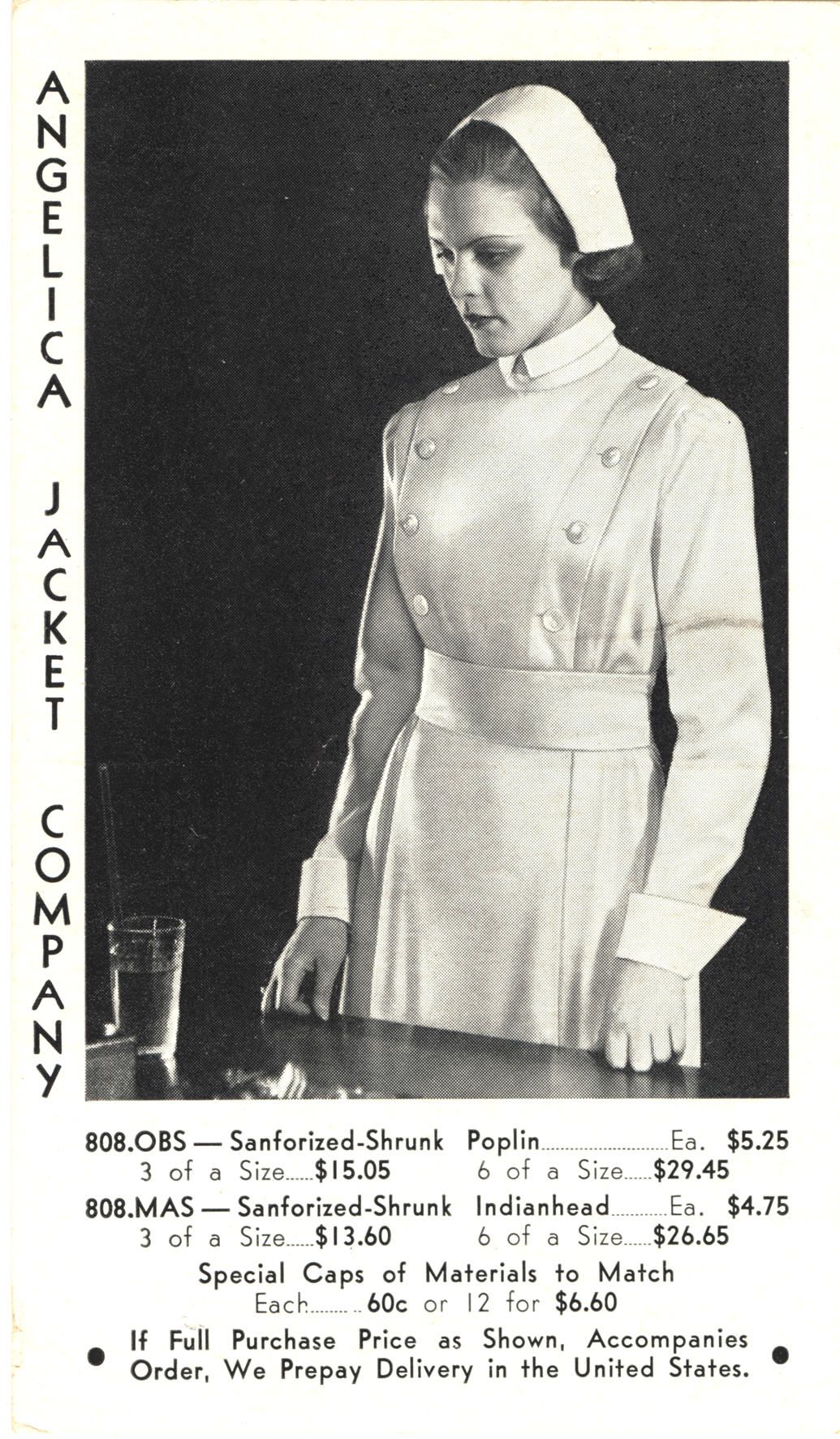Digital Gallery Browse
What do we see when we look closely?
Examine this advertisement for a modern nursing uniform designed to look similar to the uniform worn by American movie actress Loretta Young who played trainee nurse June Arden in the popular nursing recruitment and training movie The White Parade (1934).
Roll over different areas of the postcard to discover answers to the questions below.
-
- Q1Can you spot any differences to nurses' uniforms worn in earlier times?
- A1The traditional white pinafore apron is streamlined to create a modern look but retains the traditional wide belt.
-
- Q2Can you see how nurses' caps have changed?
- A2By the 1930s, American nurses' caps no longer resemble nuns' veils or frilly bonnets. Stripes on a cap indicate seniority and status.
-
- Q3Why does this uniform have long sleeves and cuffs?
- A3Long sleeves, worn for warmth, are protected by washable cuffs. During World War II, uniforms had short sleeves due to scarcity of cloth.
-
- Q1Can you spot any differences to nurses' uniforms worn in earlier times?
- A1The traditional white pinafore apron is streamlined to create a modern look but retains the traditional wide belt.
-
- Q2Can you see how nurses' caps have changed?
- A2By the 1930s, American nurses' caps no longer resemble nuns' veils or frilly bonnets. Stripes on a cap indicate seniority and status.
-
- Q3Why does this uniform have long sleeves and cuffs?
- A3Long sleeves, worn for warmth, are protected by washable cuffs. During World War II, uniforms had short sleeves due to scarcity of cloth.
- 1Can you spot any differences to nurses' uniforms worn in earlier times?
- 2Can you see how nurses' caps have changed?
- 3Why does this uniform have long sleeves and cuffs?













